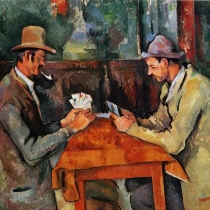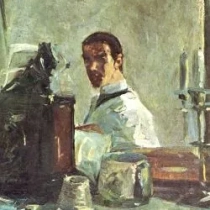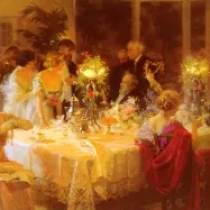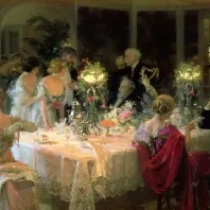 1839 - 1906
post-impressionism
1839 - 1906
post-impressionism
Description Paul Cezanne
Paul Cézanne, born in 1839 in Aix-en-Provence, France, emerged as a revolutionary force in the art world, bridging the gap between Impressionism and the avant-garde movements of the 20th century. His artistic journey, marked by a relentless pursuit of form and structure, unfolded against the picturesque landscapes of Provence.
Cézanne's early years were marked by a rebellious spirit. His friendship with Émile Zola during their school days in Aix-en-Provence was a prelude to his later immersion in the bohemian circles of Paris. Yet, Cézanne's attempts to break into the Parisian art scene faced initial rejection.
His turning point came with the inclusion of his work in the Salon des Refusés in 1863, where unconventional pieces were exhibited. Although this marked a departure from the traditional, Cézanne's style was still evolving. His encounter with Impressionist ideas, especially through the works of Camille Pissarro, had a profound impact, pushing him to explore the effects of light and color.
Cézanne's artistic maturation, however, took a distinctive turn. Rejecting the fleeting impressions of the Impressionists, he delved into a more contemplative approach, seeking the underlying structures and geometry of nature. This marked the birth of what would later be termed "Post-Impressionism."
His iconic series of Mont Sainte-Victoire and the Card Players, among others, demonstrated his fascination with capturing the essence of form. Cézanne's methodical, almost scientific, approach involved repeated studies and a meticulous dissection of objects into their basic geometric shapes.
Despite his pivotal role in shaping modern art, Cézanne faced mixed critical reception during his lifetime. His rejection of traditional perspective and color norms challenged conventional aesthetics. However, his influence extended to a younger generation, including artists like Picasso and Matisse, who recognized the transformative power of Cézanne's innovations.
Cézanne's later years saw a retreat to Aix-en-Provence, where he continued his artistic exploration. His dedication to capturing the fundamental structure of nature, coupled with his use of color, laid the groundwork for Cubism and other avant-garde movements.
Paul Cézanne passed away in 1906, leaving a legacy that transcended the boundaries of his time. His commitment to redefining artistic representation and his impact on subsequent generations solidified his status as a pioneering figure in the evolution of modern art. Cézanne's canvases, with their geometric precision and chromatic subtleties, remain an enduring invitation to see the world through the eyes of a revolutionary visionary.
Gallery
Paintings Paul Cezanne
Quotes
I could paint for a hundred years, a thousand years without stopping and I would still feel as though I knew nothing.
I want to make of impressionism something solid and lasting like the art in the museums.
The day is coming when a single carrot, freshly observed, will set off a revolution.
The painter tries to master color, but color too is a means of expression.
I will astonish Paris with an apple.









No Comments Yet...